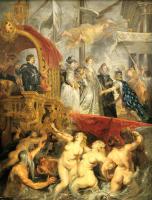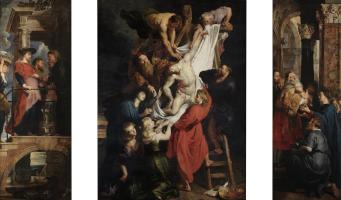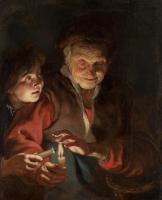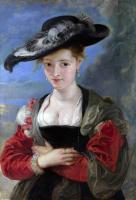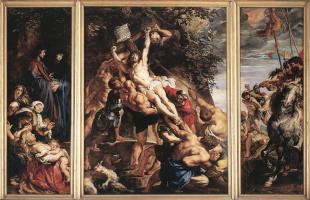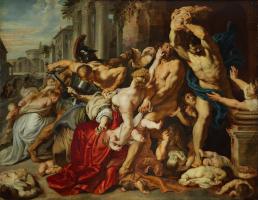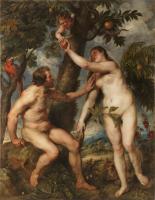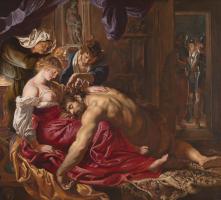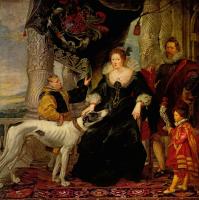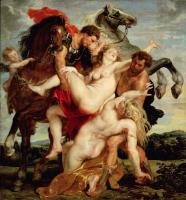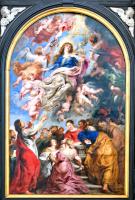Peter Paul Rubens
The Prince of Painters was the name given to the Flemish artist Sir Peter Paul Rubens. He was the son of a high-ranking official in the Flemish government, and combined an astonishingly successful artistic career with missions of diplomacy for the Governors of the Netherlands. He was well-educated, good-looking, charmed everyone he met with his courteous manners, and spoke several languages. He visited many European countries including Italy, where he studied the High Renaissance masters — Titian and Michelangelo in particular. He was also deeply influenced by the work of Caravaggio.
His paintings were executed with great confidence and control in rich and intoxicating colour, which is one of the most important features of his work. His rapid preparatory sketches in oils show the freedom and verve of his style. Commissions poured in, and he produced, with the help of assistants (the young van Dyck among them), countless portraits, landscapes, mythological scenes with voluptuous nudes, religious pictures and altarpieces.
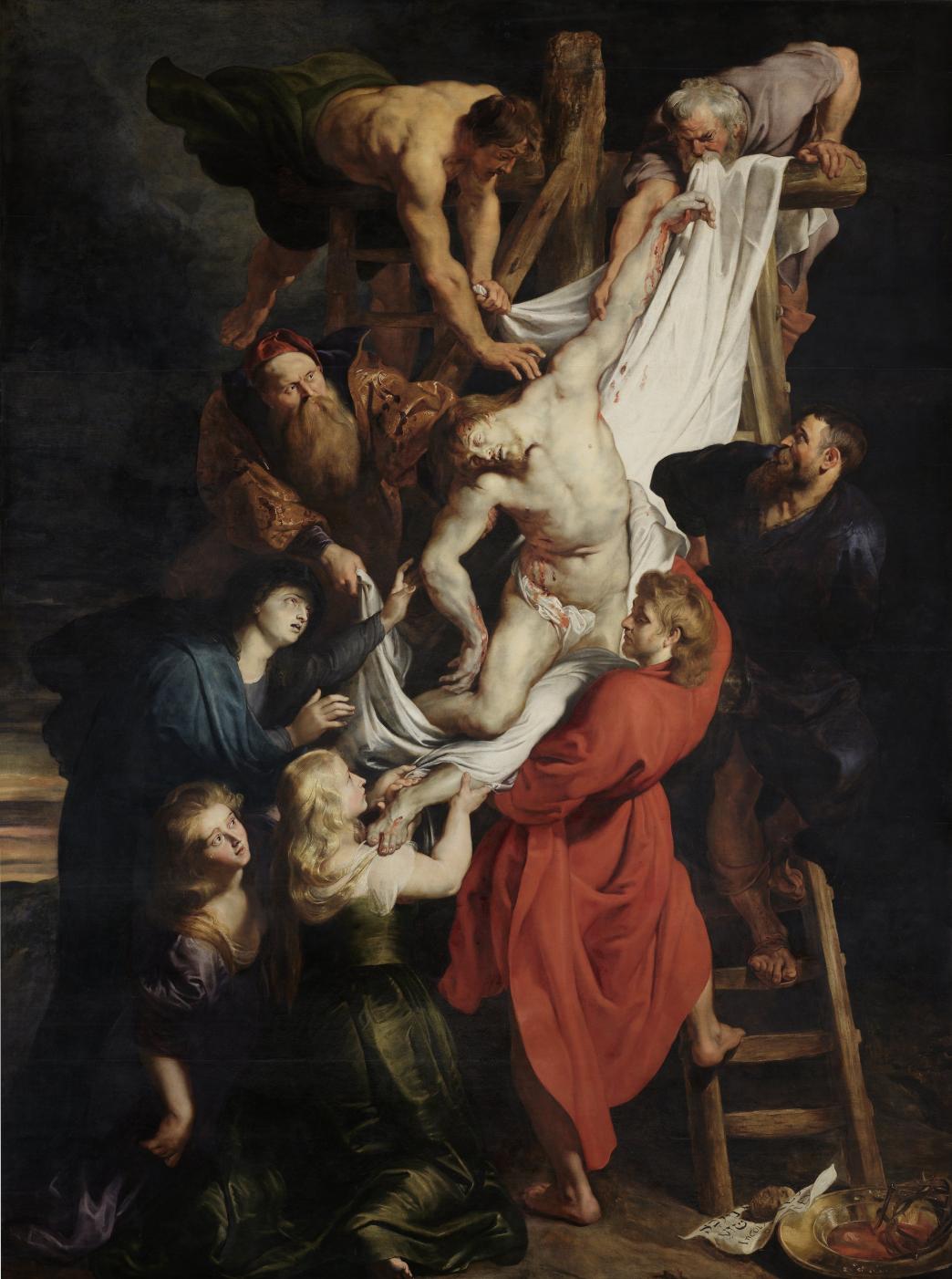 This major work formed the central panel — some fourteen feet wide and
ten feet high — of an altarpiece for Antwerp Cathedral. It depicts the
descent from the cross, and shows Christ’s pale body being gently lowered into
the arms of St John the Evangelist. The Virgin, in a billowing blue robe,
reaches up to him, and Mary Magdalene supports his feet. On the left the
bearded Joseph of Arimathea anxiously clasps the white shroud in which the body
will be wrapped in the tomb, and Nicodemus descends the ladder on the right.
The nine figures are arranged in such a way that they form a single diagonal
line, with Christ at the centre of the group. This device effectively and
dramatically focuses attention on the main subject, and at the same time
expresses the concern and protective care felt by Christ’s friends and family.
This major work formed the central panel — some fourteen feet wide and
ten feet high — of an altarpiece for Antwerp Cathedral. It depicts the
descent from the cross, and shows Christ’s pale body being gently lowered into
the arms of St John the Evangelist. The Virgin, in a billowing blue robe,
reaches up to him, and Mary Magdalene supports his feet. On the left the
bearded Joseph of Arimathea anxiously clasps the white shroud in which the body
will be wrapped in the tomb, and Nicodemus descends the ladder on the right.
The nine figures are arranged in such a way that they form a single diagonal
line, with Christ at the centre of the group. This device effectively and
dramatically focuses attention on the main subject, and at the same time
expresses the concern and protective care felt by Christ’s friends and family.
The perfectly harmonized colours glow against an ominously dark sky. Joseph’s hat and the robe of St John reinforce the red of Christ’s blood. The flesh tones and the dazzling white shroud, which accentuates the structure of the composition, provide the main sources of light.
The Descent from the Cross is a supreme work of art, showing the vision and dynamism of Rubens’s imagination. It captures the attention of worshippers in the Cathedral now as it did three centuries ago, and magnificently fulfils the purpose for which it was intended — to encourage the faithful.
The side panels of the altarpiece depict, on the left, the Virgin’s visit to her cousin Elizabeth to celebrate their pregnancies, and, on the right, the presentation of Jesus at the Temple of Jerusalem.
 Drawing upon his Latin school education, Rubens produced scores of elaborate
altarpieces and allegorical ceilings. He was adept at painting supposedly
Christian virtue but giving it a subversive sinuosity; the voluptuous features
of his nudes are deliberately exaggerated to emphasize fecundity and freedom
from want.
Drawing upon his Latin school education, Rubens produced scores of elaborate
altarpieces and allegorical ceilings. He was adept at painting supposedly
Christian virtue but giving it a subversive sinuosity; the voluptuous features
of his nudes are deliberately exaggerated to emphasize fecundity and freedom
from want.
One of a cycle of 21 paintings for the Palais de Luxembourg, commissioned by the French dowager queen Marie de Medici to depict her life. Rubens prepared hundreds of master sketches for his studio to work from. It was no easy task diplomatically either, since the queen was quarrelsome, far from attractive and had wasted huge amounts of money without achieving anything remarkable in her life. To Rubens’ credit, he left a satisfied customer on completion.
Rubens was an exceptionally talented, energetic and prolific painter, a favourite at the court of Philip IV of Spain, knighted by Charles I of England, and court painter first to the Duke of Mantua in Italy, and later to the Spanish rulers of the Netherlands in his native Antwerp. He held this appointment until his death, and became the most important Baroque artist in Northern Europe. Rubens’ stylistic influence endured over three centuries, inspiring artists from Van Dyck and Murillo, through Watteau and Gainsborough to Delacroix and Renoir.


